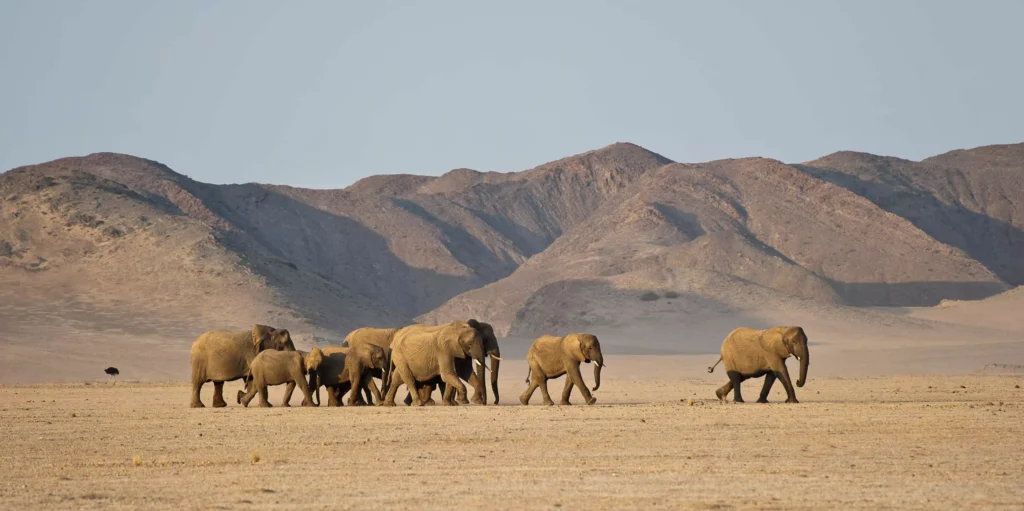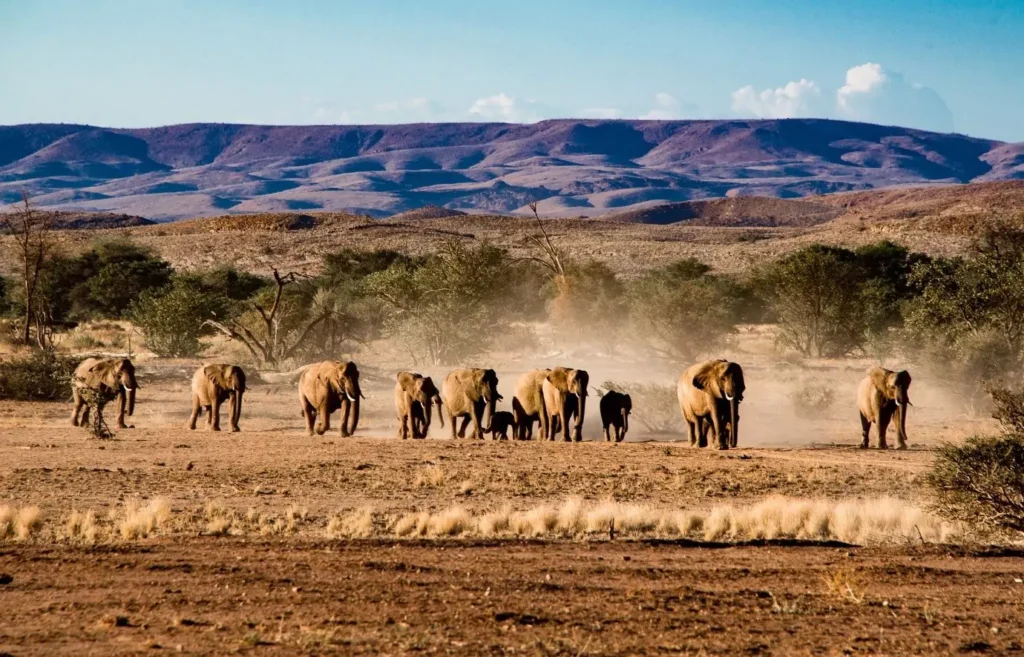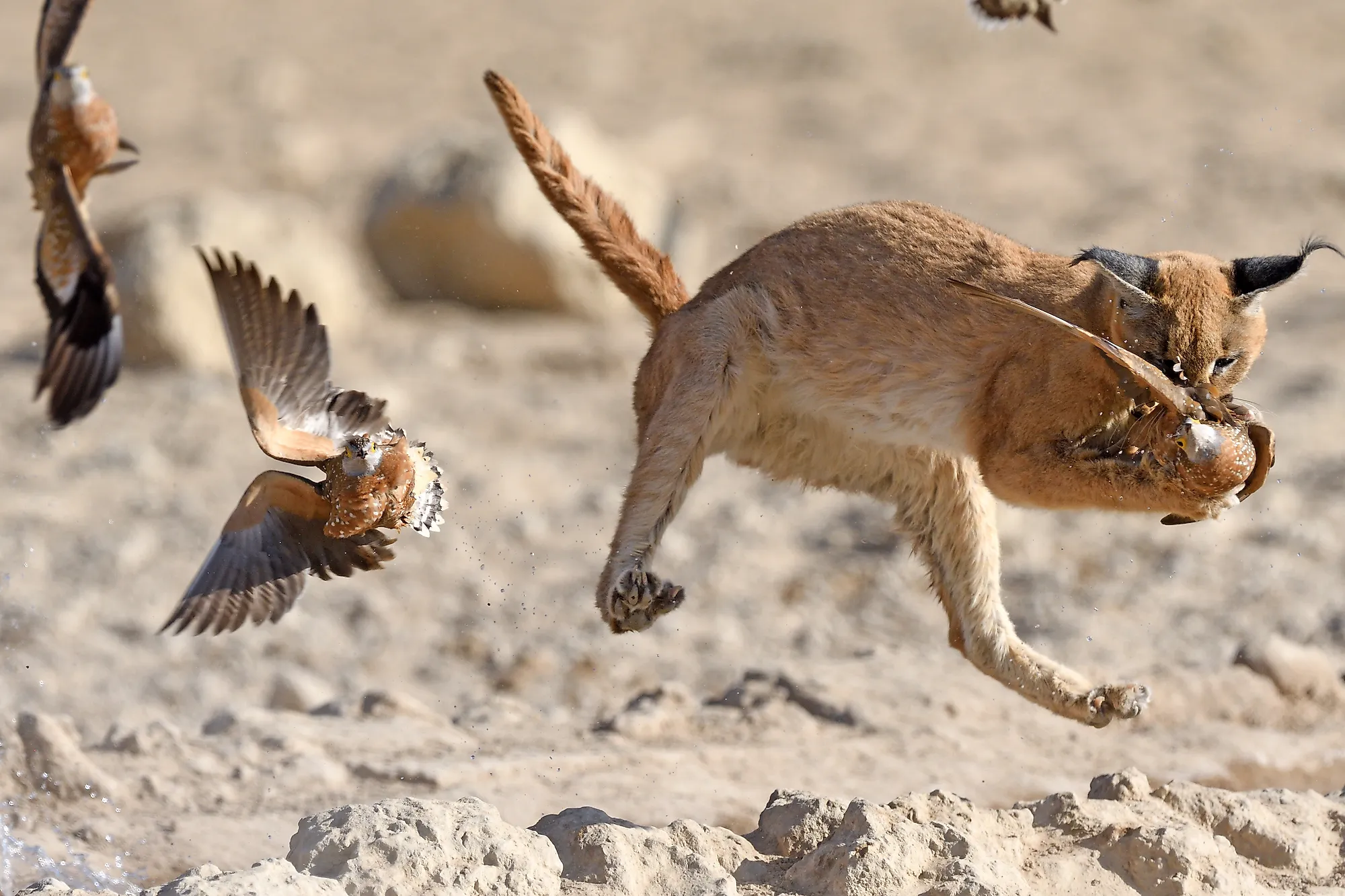Africa has abundant wildlife, which attracts tourists from all around the world, but your journey will never be complete if you have not visited the beautiful country of Namibia. It has become a popular safari destination as the sight of the beautiful landscape allows visitors to capture the picturesque desert. You might just assume that it is all about the animals but it far more than that Discover Namib Desert Animals.
Do you know that there is an incredible array of wildlife as well as a myriad of plant and bird species that are unique and endemic to Namibia alone? That is, you may never find them elsewhere in the Southern Africa region. Therefore, you do not want to miss out on the numerous opportunities to explore the wildlife of the desert land Namib Desert Animals.

Namibia has about 11 National Parks and at least seven protected areas – game reserves that are home to thousands of animal species of various types. The country boasts a population of over 680 different species of birds. The admirable dune lark is a bird that is recorded to be 100% endemic to Namibia, and records show that it does not drink water from Namib Desert Animals.
Then, how does the dune lark survive? The answers are not far-fetched birds simply feed on insects, termites, and vegetation. Plants like the WELWITSCHIA MIRABILIS are a fascinating sight to see. Growing up in the arid desert land, you cannot find this magnificent plant anywhere else.
Also, about 150 lions are described to be desert-adapted and survive eating marine life, which is a completely different behavior from other lions. It is unimaginable that animals of this sort would survive in such harsh conditions, but there are more surprises to come when you visit Namib Desert Animals.
You will catch a glimpse of the dune lark, Oryx, cheetah, cormorants, elephants, hippopotami, giraffes, jackals, springboks, hyenas, seals, and flamingos. The world’s population of rhinos has greatly decreased to just about 5,000, but 98% of that population is distributed across four countries- Namibia, South Africa, and Zimbabwe Namib Desert Animals.
The Namibian government works very hard at protecting the rich wildlife of the country, and this has contributed to the immense boost in wildlife conservation, saving thousands of animal species that were endangered or on the brink of extinction. It is recorded that approximately 4,350 species and subspecies have been found here. About 17% of that population is either endemic or near-endemic to Namibia.
NAMIBIA’S NATIONAL PARKS

Namibia has about 11 parks and game reserves which have become home to a wide variety of wildlife, birds, and plant species Namib Desert Animals.
These parks include the Etosha National Park, the CAPRIVI, which is the reputable home of the massive hippopotamus, the Chobe Park, Ai-Ais/Richtersveld Transfrontier Park, Bwabwata National Park, Khaudum National Park, Mudumu National Park, Namib-Naukluft National Park, Nkasa Rupara National Park, Skeleton Coast National Park, Waterberg National Park e.t.c. a reasonable population of animals that would have been extinct like the cormorant, have been helped and saved.
These parks welcome millions of tourists each year to catch a glimpse of the beautiful landscape and harness the unique opportunities here at Namib Desert Animals.
DIFFERENT DESERT CREATURES IN NAMIBIA
The Namib Desert is among the most unique and diverse ecosystems in the world, home to a variety of fascinating ground animals that have adapted to survive in a harsh and unforgiving environment. Some of the most iconic and well-known desert animals found in Namibia include the fennec fox, bat-eared fox, Oryx, and springbok Namib Desert Animals.

The fennec fox is a minor but mighty predator with large ears that help it detect prey and avoid predators. The bat-eared fox is another desert predator with specialized teeth and a diet that includes insects and small rodents Namib Desert Animals.
Both of these foxes have adapted to survive in the desert by being active primarily at night and having efficient water-conserving mechanisms.
The Oryx and springbok are both iconic antelopes of the Namib Desert Animals, known for their unique adaptations for survival in the desert.
The Oryx, also known as the gemsbok, has long, straight horns that it uses to defend itself against predators and can go for long periods without water.
The springbok has developed the ability to survive without water for long periods and can also run at incredibly fast speeds to escape predators and Namib Desert Animals.
Other ground animals found in the Namib Desert Animals include the desert elephant, meerkat, sand cat, porcupine, and Namib dune gecko.
Each of these animals has its unique variations that allow it to survive in the harsh desert environment, whether through water-conserving mechanisms, specialized diets, or adaptations for camouflage and protection of Namib Desert Animals.
FAQs
Q: What is the most common ground animal found in the Namib Desert?
A: The springbok is one of the most common ground animals found in the Namib Desert, known for its unique ability to survive without water for long periods and its fast running speed to escape predators.
Q: How do animals in the Namib Desert adapt to survive without water?
A: Animals in the Namib Desert have developed various adaptations for surviving without water, including specialized kidneys that conserve water, efficient cooling mechanisms, and the ability to extract moisture from their food Desert Creatures.
Q: What is the fennec fox?
A: The fennec fox is a small but mighty predator of the Namib Desert, known for its large ears that help it detect prey and avoid predators and its efficient water-conserving mechanisms.
Q: What is the Oryx?
A: The Oryx, also known as the gemsbok, is a majestic antelope of the Namib Desert, known for its long, straight horns and skill to survive for a long time of time without water.
Q: What is the sand cat?
A: The sand cat is a fierce and hardy predator of the Namib Desert, known for its ability to survive without water for long periods and its specialized hunting techniques, such as burying its prey in the sand for later consumption Desert Creatures.
Q: How do animals in the Namib Desert protect themselves from predators?
A: Animals in the Namib Desert protect themselves from predators through various adaptations, including speed and agility, camouflage, and the ability to defend themselves with sharp horns or spines.
Q: What is the Namib dune gecko?
A: The Namib dune gecko is a master of camouflage in the dunes of the Namib Desert Animals, with specialized skin that allows it to blend in with its environments and avoid predators.
Q: How do animals in the Namib Desert interact with each other?
A: Namib Desert Animals interact with each other in various ways, such as through cooperation in groups, competition for resources, and predation. Some animals also have symbiotic relationships with other species, such as the bat-eared fox and the honey badger, which work together to hunt and share food.


